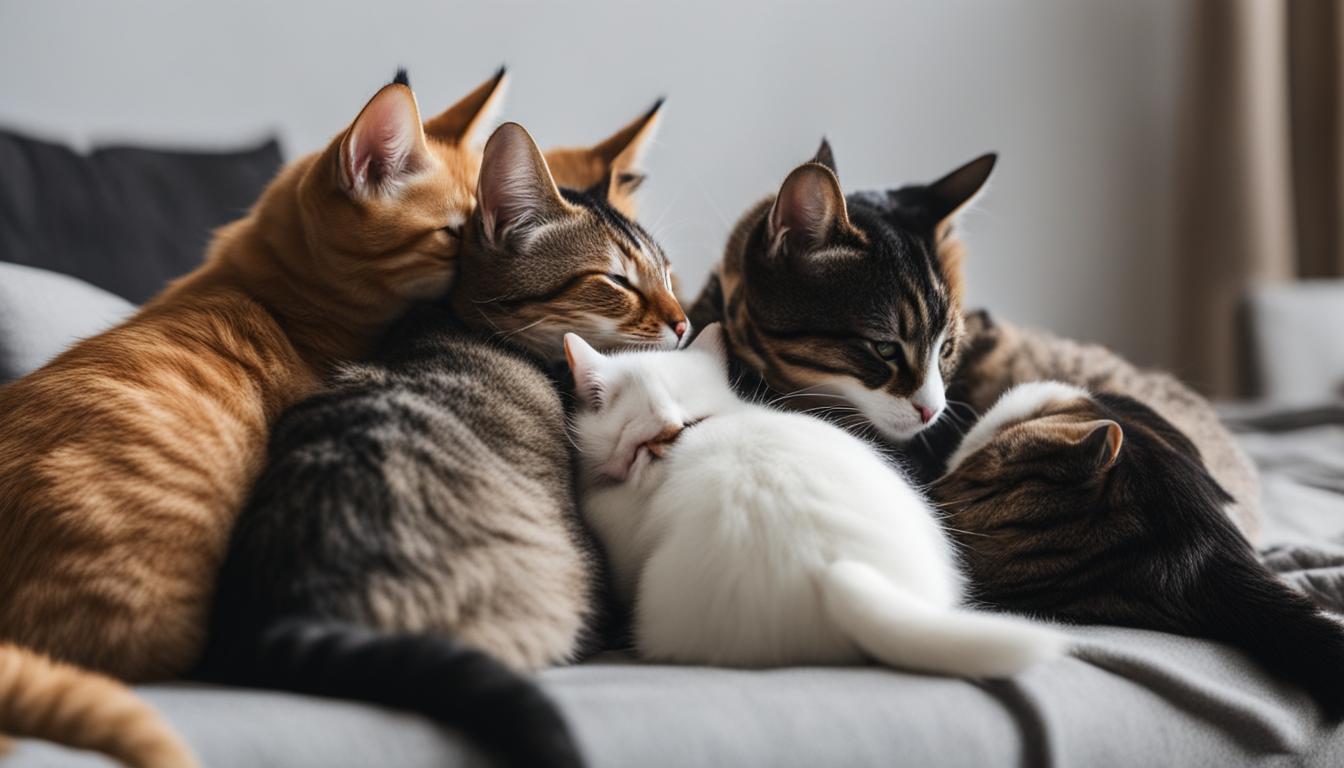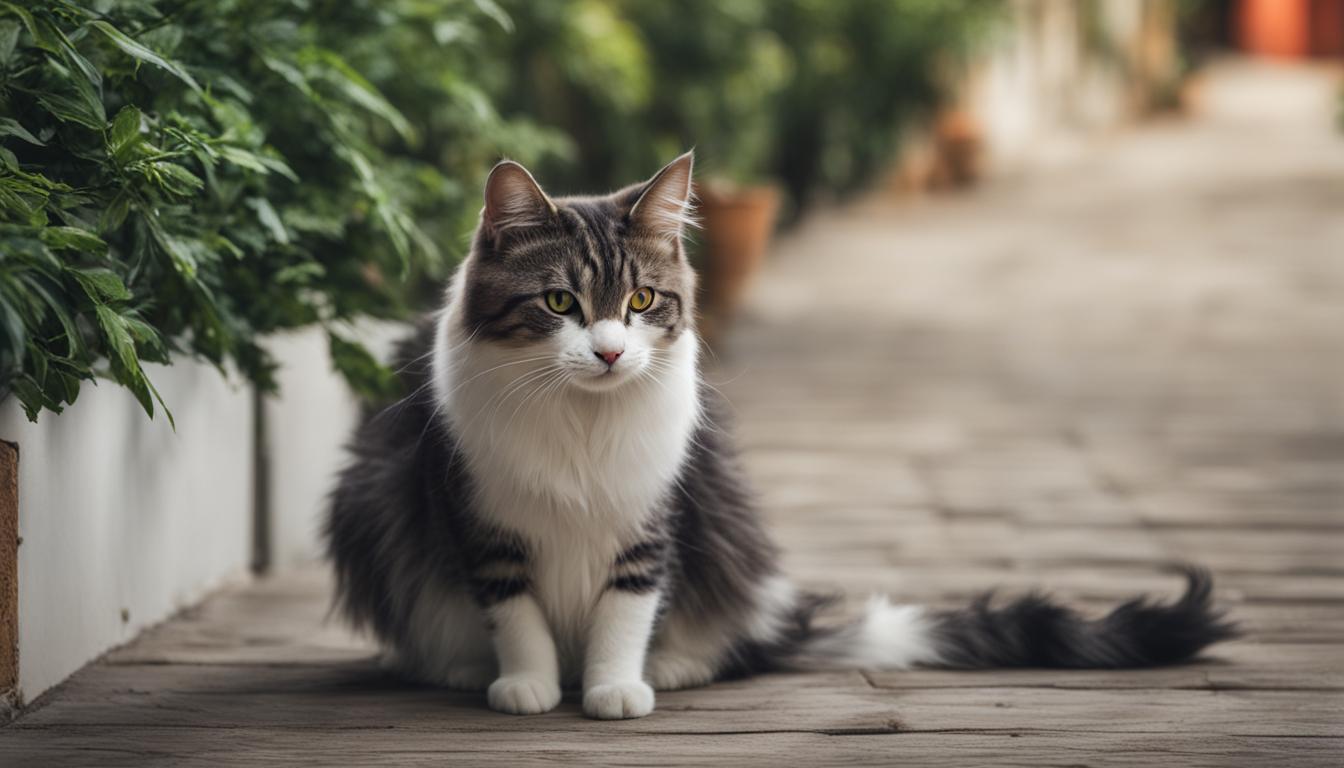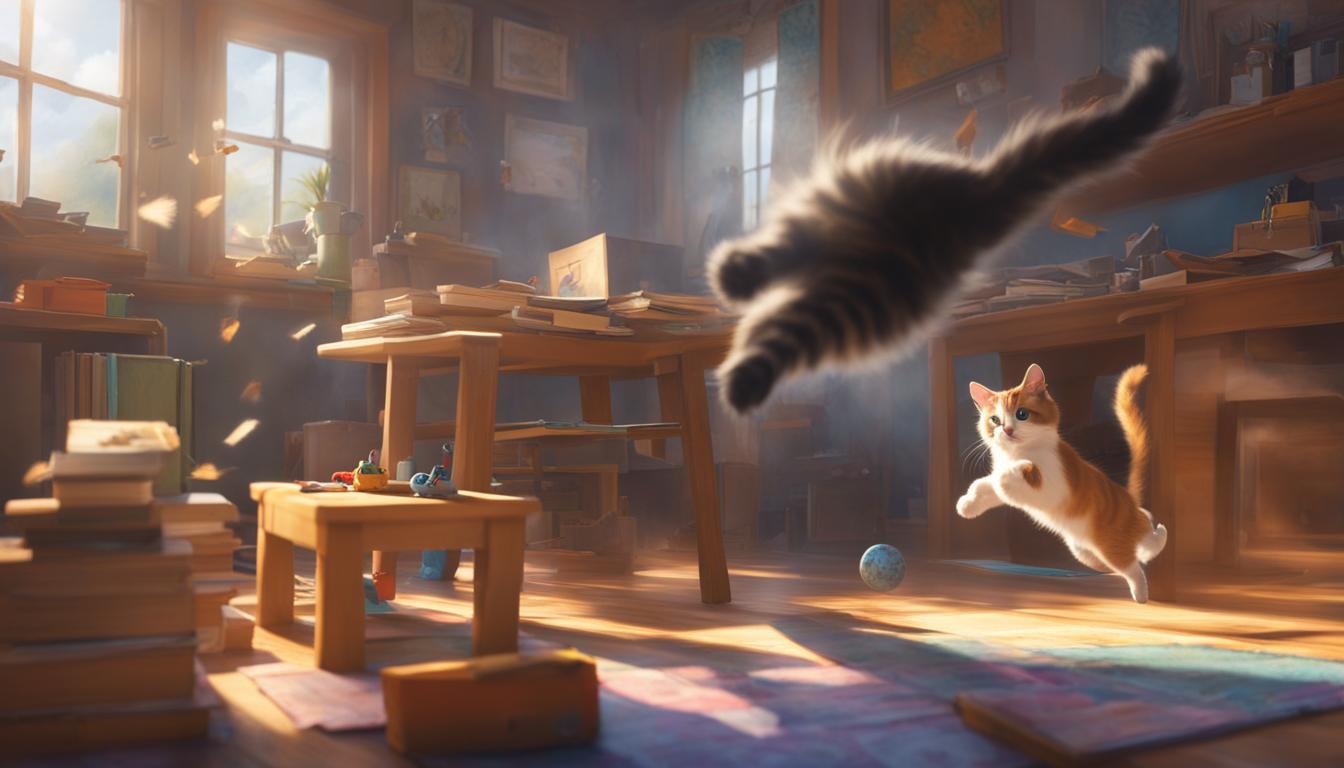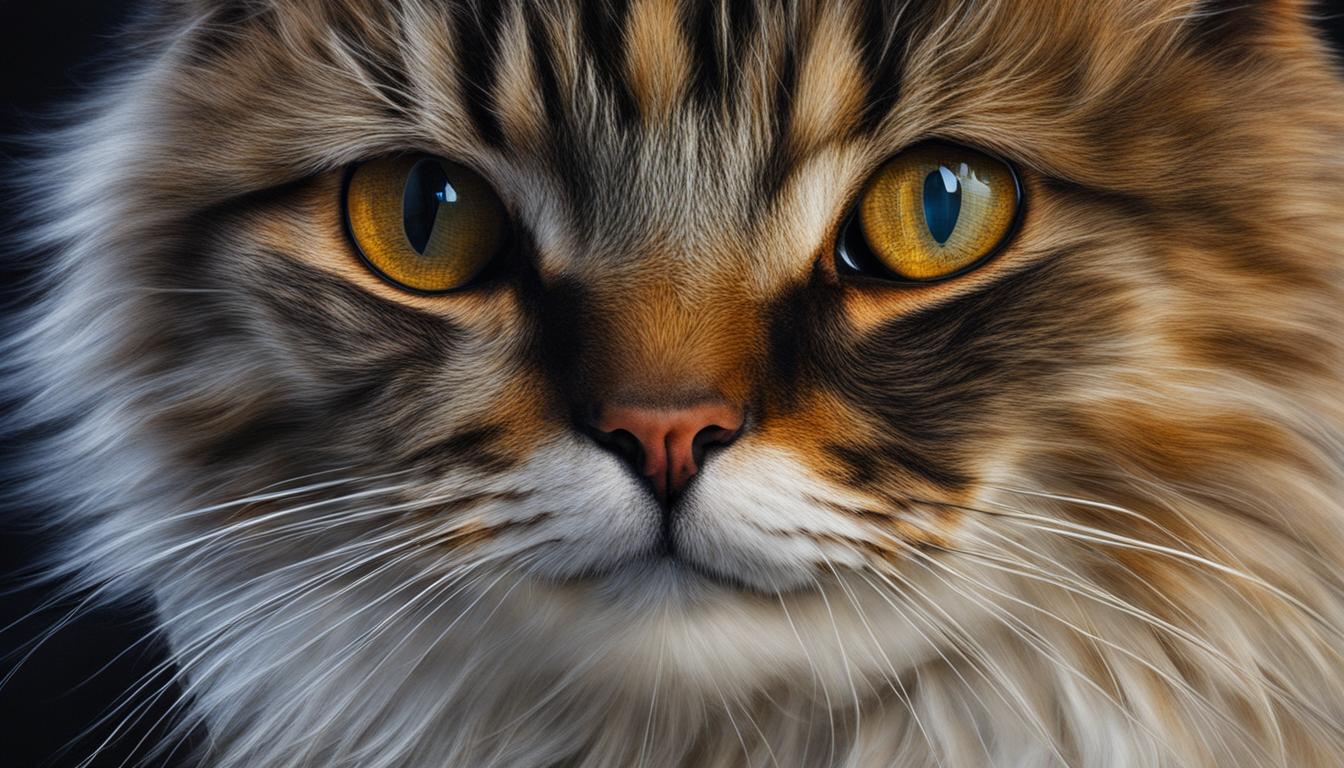As a feline enthusiast, I’ve always been fascinated by the social behaviors of cats. There’s a common misconception that cats are solitary animals, but that’s far from the truth. The reality is much more complex and intriguing.
So, let’s dive into the world of feline social behavior and debunk the myths that surround it. From cat social interaction patterns to the solitary cat myth, we’ll explore the fascinating truths behind our beloved feline friends.
Now, let’s take a closer look at the key takeaways from our exploration:
Key Takeaways:
- Cats are not solitary animals; their social behavior is influenced by genetics, early development, and lifetime experiences.
- Some cats benefit from the presence of another cat, while others may find it stressful.
- Neglecting a cat’s social needs can lead to stress-related behaviors such as elimination outside the litter box, persistent hiding, and aggression.
- Understanding and addressing a cat’s socialization needs is crucial for maintaining a positive human-animal bond.
The Complexities of Cat Socialization with Humans
Contrary to popular belief, cats are capable of forming strong social bonds with humans. They have the ability to develop a synchronized behavior known as slow blink-matching, where they imitate the blinking frequency of their owners. This behavior demonstrates attention and adjustment to their human’s actions, showcasing their desire for social interaction and connection.
Early exposure to humans and diverse social interactions can also benefit a cat’s social behavior and cognitive development. Providing opportunities for play that mimic natural predatory behaviors allows cats to engage in their instinctual behavior while strengthening their bond with their human companions.
“Cats are highly social animals, and their relationships with humans are complex. They may not seek constant attention like dogs, but they do value social interaction and form deep connections with their owners.”
The Importance of Olfactory Communication
In addition to physical interactions, creating an environment that caters to their olfactory communication is crucial. Cats rely on scent marking and pheromones to communicate with one another and with their human companions. By providing scratching posts and vertical spaces for scent marking, and using synthetic feline facial pheromone products, owners can enhance their cat’s sense of security and well-being.
Understanding and investing in their cats’ socialization needs is an essential part of maintaining a strong bond. By engaging in positive and consistent social interactions, providing opportunities for play, and catering to their olfactory communication, cat owners can create a loving and fulfilling environment for their feline companions.

| Benefits of Cat Socialization with Humans | How to Build Bonds Between Cats and Humans |
|---|---|
|
|
Debunking the Myths of Minimal Social Interaction
Contrary to popular belief, cats are not aloof creatures that require minimal social interaction. While they may be seen as less social than dogs, studies have shown that cats are trainable and capable of forming strong bonds with their owners. However, it is important to understand that cats have specific socialization needs, especially when living in multi-animal homes.
Signs of social stress in cats: It is crucial for cat owners to be aware of signs of social stress in their feline companions. These signs may include eliminating outside the litter box, persistent hiding, or aggressive behaviors. These behaviors can indicate that a cat is experiencing social stress and may be in need of intervention and support.
Cat friendship behaviors: Cats are known to engage in various friendship behaviors with other cats. These behaviors include grooming each other, playing together, and sharing space. By creating a positive social atmosphere and providing opportunities for these friendship behaviors, cat owners can contribute to the overall well-being of their pets.
| Signs of Social Stress in Cats | Cat Friendship Behaviors | |
|---|---|---|
| Description | Behaviors exhibited by cats experiencing social stress | Behaviors displayed by cats when forming friendships with other cats |
| Examples | Eliminating outside the litter box, persistent hiding, aggression | Grooming each other, playing together, sharing space |
Understanding the social needs of cats in multi-animal homes is essential for creating a harmonious environment. It is important to provide an environment that allows each cat to access key resources, such as food and space, without competition. By addressing signs of social stress and promoting positive social interactions, cat owners can ensure a fulfilling and enriching life for their feline companions.
The Truth About Cat Needs
Cats are fascinating creatures with unique social needs. Contrary to popular belief, they are not low-maintenance animals. To ensure their well-being, it is essential for cat owners to understand and meet their specific needs.
One important aspect of cat social behavior is the establishment of a social hierarchy. Cats are known to have complex social structures, and understanding this hierarchy is crucial for creating a harmonious environment. By providing key resources such as perches, hiding areas, and access to food and space, cat owners can help cats feel secure and minimize social stress.
Signs of social stress in cats should be carefully observed and addressed. These signs include eliminating outside the litter box, persistent hiding, and aggression. Creating an environment that allows each cat to have its own territory and resources can help alleviate social stress and foster a positive social atmosphere among cats.
| Signs of Social Stress in Cats | Cat Friendship Behaviors |
|---|---|
|
|
Building strong social bonds between cats is possible through cat friendship behaviors such as mutual grooming, playing together, and sharing resting spaces. Cat owners can facilitate these behaviors by providing an enriched environment that encourages interaction.
Understanding and addressing the social needs of cats is key to maintaining a positive human-animal bond. By creating an environment that supports their social hierarchy, addressing signs of social stress, and promoting cat friendship behaviors, cat owners can provide their feline companions with a fulfilling and enriching life.
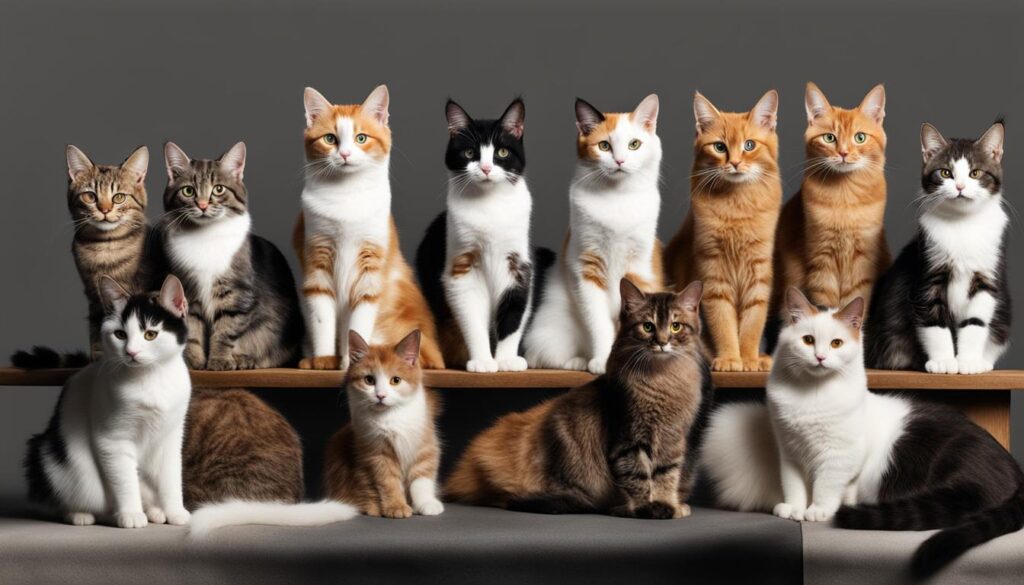
Addressing Training and Behavior
Cats are often seen as independent and untrainable creatures, but this is far from the truth. With the right approach, cats can be trained to display desired behaviors and engage in positive social interactions. Understanding the social interaction patterns and hierarchy among cats is key to effectively training and managing their behavior. By utilizing training techniques and building a trusting relationship, cat owners can foster harmonious interactions and create a positive environment for their feline companions.
Training sessions with cats should be kept short and focused on behaviors that are rewarded. Cats are motivated by their individual preferences, such as food, play, or affection. By identifying these motivators, owners can establish a positive reinforcement system that encourages the desired behavior. For example, teaching a cat to enter a carrier with positive reinforcement can reduce stress during vet visits or emergency situations.
“Training cats requires patience and consistency. It’s important to remember that cats respond best to positive reinforcement rather than punishment.”
Understanding cat play behaviors is also crucial when addressing training and behavior. Play is a natural behavior for cats and serves as a way to release energy and engage in social interactions. By providing opportunities for play that mimic their natural predatory instincts, such as interactive toys or scratching posts, owners can channel their cat’s energy in a positive way. Engaging in play with cats not only strengthens the bond between owner and cat but also provides mental stimulation and helps prevent behavior problems.
| Training Tips | Play Behaviors |
|---|---|
|
|
By addressing training and behavior with a positive and patient approach, cat owners can create a harmonious environment that promotes social interaction and strengthens the bond between themselves and their feline companions.
Conclusion
Understanding cat behavior is like unlocking the secret language of these fascinating creatures. Throughout this article, I have debunked common myths about feline social behavior and shed light on the true nature of our feline companions. Cats are far from solitary animals; their social behavior is shaped by a multitude of factors, including genetics, early development, and lifetime experiences.
It’s important to recognize that cats can form strong social bonds with humans. They have the ability to synchronize their behavior with us, displaying attention and adjustment through slow blink-matching. By engaging in positive and consistent social interactions and providing an environment that caters to their olfactory communication, we can build a deep and meaningful bond with our feline friends.
Additionally, debunking the myth of minimal social interaction is crucial, especially in multi-animal households. Cats thrive when their socialization needs are met, and creating a harmonious environment where each cat has access to key resources without competition is essential. Understanding cat friendship behaviors and addressing signs of social stress can contribute to a happier and healthier coexistence.
In conclusion, by understanding and appreciating cat social behavior, we can create a loving and enriching environment for our feline companions. Let’s continue to debunk the myths, nurture their social needs, and build a strong and enduring bond with these incredible creatures.
FAQ
Are cats solitary animals?
No, cats are not universally solitary. Their social behavior is influenced by genetics, early development, and lifetime experiences.
Can cats form strong social bonds with humans?
Yes, cats are capable of forming strong social bonds with humans. They have the capacity to develop synchronized behavior known as slow blink-matching.
Do cats require minimal social interaction with humans?
No, cats have specific socialization needs. While they may be seen as less social than dogs, they are trainable and capable of forming strong bonds with their owners.
What are the socialization needs of cats in multi-animal homes?
In multi-animal homes, it is important to provide an environment that allows each cat to access key resources without competition. Signs of social stress should be addressed.
What are the signs of social stress in cats?
Signs of social stress in cats include eliminating outside the litter box, persistent hiding, and aggression.
Can cats be trained?
Yes, cats can be trained. They have the ability to learn behaviors that are rewarded, and training can be used to facilitate positive social interactions and enrichment.

